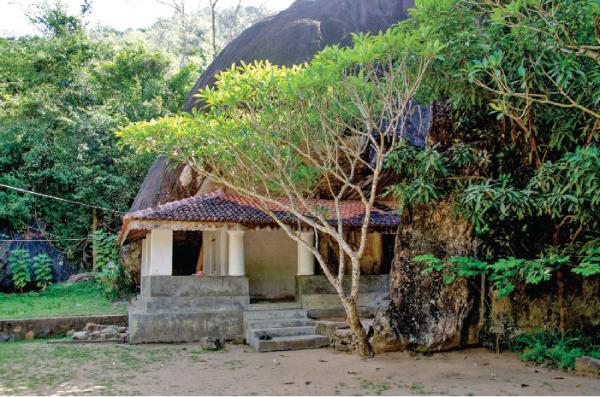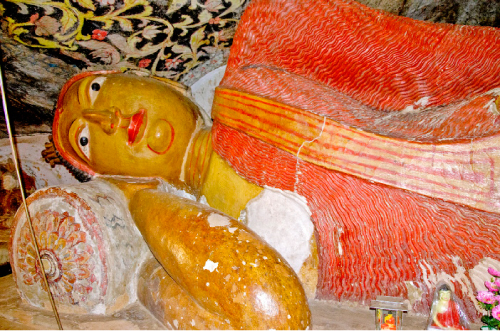
The historic cave temple of Buddama Raja Maha Vihara is in the village of Buddama in the Siyabalanduwa Divisional Secretariat in the Moneragala district.
The chronicles
The chronicles including the Mahawansa and the inscriptions found in the temple premises confirm that it was built in the third century BC.
The Uva Viharawansa a chronicle on historic temples in the Uva Province describes the places of Buddhist worship in Buddama, even before the advent of Buddhism in Sri Lanka. It was one of the early settlements in the country. Robert Knox
The chronicle says that Robert Knox who spent many years in the country as a prisoner of the Kandyan King has visited the Buddama Raja Maha Vihara.
It is believed that the site of the temple comprising more than 20 caves was a vocational training centre for local craftsmen before it became a hermitage after the advent of Buddhism during the Anuradhapura period.
 |
| The murals on the walls of the cave shrine |
The Velipeella
The country’s longest and ancient Velipeella (the long box made of clay strewn with sand) used by the bhikkhus in the ancient times to practise writing letters, to novice bhikkhus and lay children has been located in a cave in the temple.
History has recorded that the Ven. Nape Buddarakkittha Thera, a resident bhikkhu of the Buddama temple, was one of the leaders of the 1818 Uva Wellassa rebellion, against the British rule.
The rock cave
The rock cave of the Buddama temple houses over 600 year-old- beautiful murals and a magnificent Buddha statue belonging to the Kandyan period.
 |
| The ancient Velipeella |
The reclining Buddha statue in the dimly-lit main chamber belongs to the Kandyan period. This main statue is believed to have been constructed by King Rajadhi Rajasingha of Kandy. The statue had been damaged by treasure hunters on several occasions.
The rock ceiling of the cave is decorated with beautiful floral motifs, while the murals offer a rich tapestry of Buddhist Jathaka stories. The murals are discoloured and have been left to the vagaries of the elements.
The cave paintings at first glance do not seem to be professional work, with the brush strokes ink
 |
| The main Buddha statue in the cave shrine |
lines showing it to be the work of novices. However, we found similar paintings in the image house in the Udaganawa temple in Buttala, which had the same style as that of the Buddama temple paintings.
This leads one to believe that the paintings were a modified form of the Kandyan style, which had spread around Moneragala.
It is a matter of serious concern that the archaeological remains of the temple including statues and murals have been left to the mercy of the elements. Treasure hunters have caused extensive damage to the statues and the roof leaks resulting in further damage to the murals.
